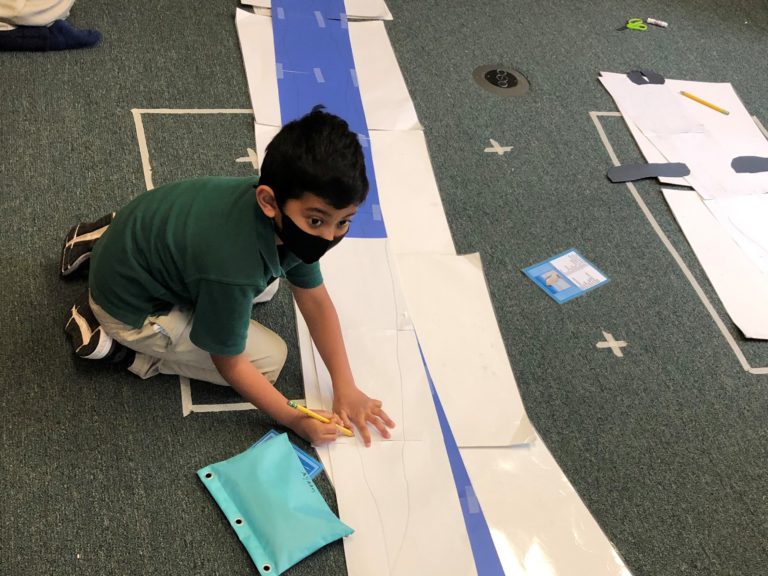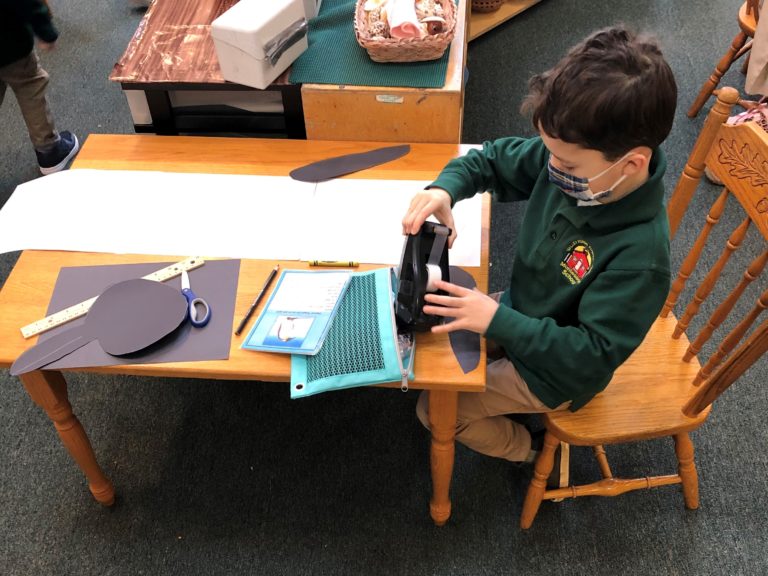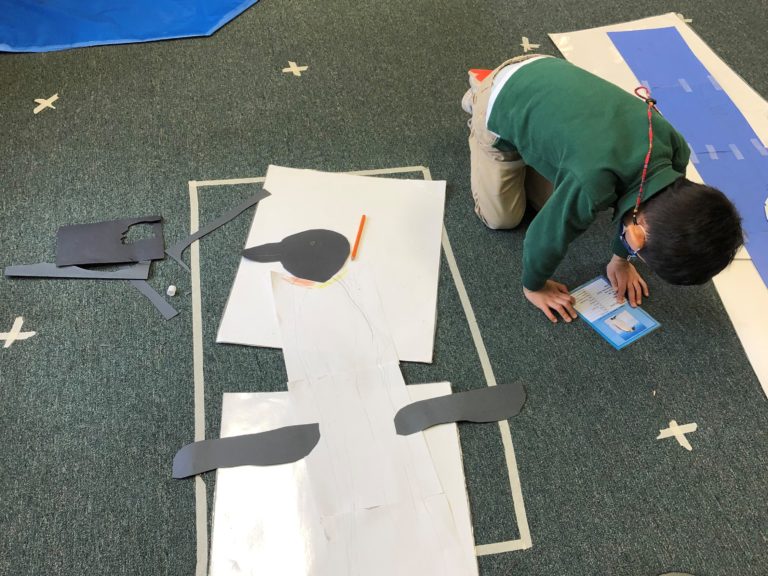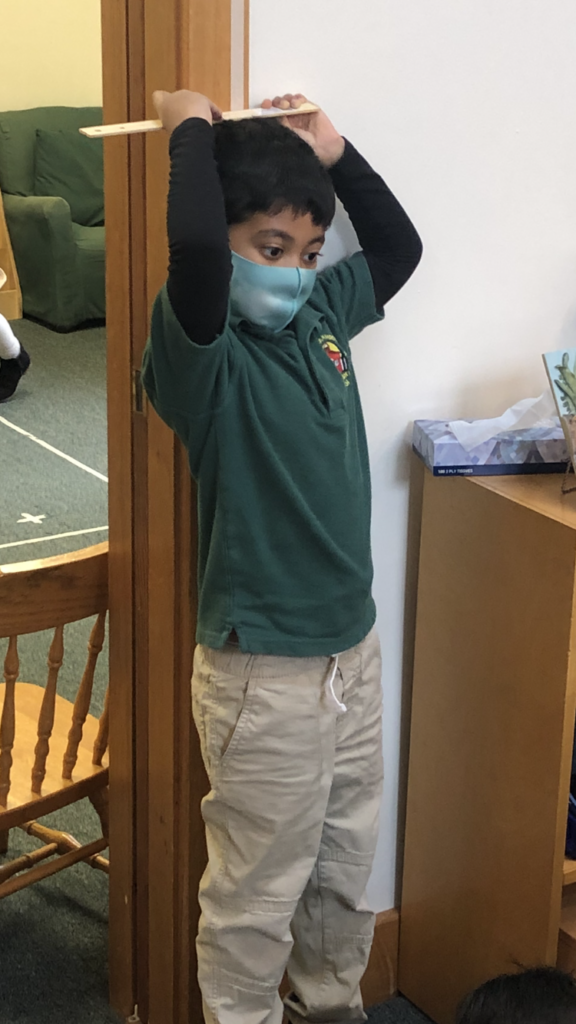
As the children work throughout the room each day, I find it a pure joy just watching how each child discovers new and exciting information through their life experiences in the classroom. These new discoveries come from all the groundwork they have already obtained and continue to develop from the various areas of the curriculum, especially the work developed from the practical life and sensorial materials.
Practical Exercises
By working through the various practical life exercises, a child is working towards the ability to perfect himself which is “ the child’s work” as Dr. Montessori wrote.

Practical life exercises help the child develop a sense of coordination, gradually build their attention span for concentration and confidence, pay more attention to details as they follow a regular sequence of actions, and learn good working habits as they finish each task and put away all the materials before starting another activity.
Sensorial Materials
Sensorial materials help the child become aware of details by offering, at first, strongly contrasted sensations, such as red and blue, and then various graded sensations, such as the many different shades of red and blue. These materials also isolate one defining quality such as color, weight, shape, texture, size, sounds, smell, etc. so the child can clearly grasp each concept and develop their ability to organize their experiences into categories that are similar or different from each other.
Explore the Classroom
By applying all these skills from the practical life and sensorial exercises, the children explore their classroom both inside and outside in a fun and unique way. A good example of this is how the children are becoming extremely interested in every area of the curriculum that relates to our winter season such as forecasting the weather, exploring the outdoor environment, and discovering how the snow can melt and refreeze each night. They are learning about the various weather terms like sleet, black ice, and blizzards and exploring how icicles and snowflakes are formed.

All of the Montessori experiences in our classroom allow the children the opportunity to apply their newly discovered knowledge of learning with enthusiasm to interest topics such as artic animals and how they live and survive in the hard winter weather. Children ask the big questions who, what, why, where, when, and how. Their discussions and exploration have created a delightful endless level of energy and love for learning.

The children also created a variety of mini murals for animal habitats and made paper models of the actual size of the animals including writing short stories with details about the animals.
Children used a measuring tape to measure the height from the floor to the top of the doorway. Then they used this measurement to compare their heights with those of varying animals.
Using standard rulers, the children created paper models of animals to depict their wingspan or height—snowy owl wingspan (130 cm), polar bear height (250 cm), walrus (300cm), arctic hare (60cm), arctic fox height (80 cm), and caribou height (140cm).
It is such a delight to see how the children’s curiosity has led them into long working periods for learning and how they apply their skills from every area of the program. They are using their practical life, sensorial, math, language, writing, geography, and science skills to make these beautiful projects. Their curiosity is endless and I would greatly encourage you to explore your own backyards or a nearby park to help your child discover even more about our winter season.